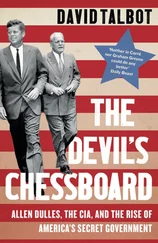The jury was out for barely an hour before returning with a unanimous guilty verdict. As Vasquez put it, “The fire does not lie.”
When Elizabeth Gilbert approached the prison guard, on a spring day in 1999, and said Cameron Todd Willingham’s name, she was uncertain about what she was doing. A forty-seven-year-old French teacher and playwright from Houston, Gilbert was divorced with two children. She had never visited a prison before. Several weeks earlier, a friend, who worked at an organization that opposed the death penalty, had encouraged her to volunteer as a pen pal for an inmate on death row, and Gilbert had offered her name and address. Not long after, a short letter, written with unsteady penmanship, arrived from Willingham. “If you wish to write back, I would be honored to correspond with you,” he said. He also asked if she might visit him. Perhaps out of a writer’s curiosity, or perhaps because she didn’t feel quite herself (she had just been upset by news that her ex-husband was dying of cancer), she agreed. Now she was standing in front of the decrepit penitentiary in Huntsville, Texas—a place that inmates referred to as “the death pit.”
She filed past a razor-wire fence, a series of floodlights, and a checkpoint, where she was patted down, until she entered a small chamber. Only a few feet in front of her was a man convicted of multiple infanticide. He was wearing a white jumpsuit with “DR”—for death row—printed on the back, in large black letters. He had a tattoo of a serpent and a skull on his left biceps. He stood nearly six feet tall and was muscular, though his legs had atrophied after years of confinement.
A Plexiglas window separated Willingham from her; still, Gilbert, who had short brown hair and a bookish manner, stared at him uneasily. Willingham had once fought another prisoner who called him a “baby killer,” and since he had been incarcerated, seven years earlier, he had committed a series of disciplinary infractions that had periodically landed him in the segregation unit, which was known as “the dungeon.”
Willingham greeted her politely. He seemed grateful that she had come. After his conviction, Stacy had campaigned for his release. She wrote to Ann Richards, then the governor of Texas, saying, “I know him in ways that no one else does when it comes to our children. Therefore, I believe that there is no way he could have possibly committed this crime.” But within a year Stacy had filed for divorce, and Willingham had few visitors except for his parents, who drove from Oklahoma to see him once a month. “I really have no one outside my parents to remind me that I am a human being, not the animal the state professes I am,” he told Gilbert at one point.
He didn’t want to talk about death row. “Hell, I live here,” he later wrote her. “When I have a visit, I want to escape from here.” He asked her questions about her teaching and art. He expressed fear that, as a playwright, she might find him a “one-dimensional character,” and apologized for lacking social graces; he now had trouble separating the mores in prison from those of the outside world.
When Gilbert asked him if he wanted something to eat or drink from the vending machines, he declined. “I hope I did not offend you by not accepting any snacks,” he later wrote her. “I didn’t want you to feel I was there just for something like that.”
She had been warned that prisoners often tried to con visitors. He appeared to realize this, subsequently telling her, “I am just a simple man. Nothing else. And to most other people a convicted killer looking for someone to manipulate.”
Their visit lasted for two hours, and afterward they continued to correspond. She was struck by his letters, which seemed introspective, and were not at all what she had expected. “I am a very honest person with my feelings,” he wrote her. “I will not bullshit you on how I feel or what I think.” He said that he used to be stoic, like his father. But, he added, “losing my three daughters … my home, wife and my life, you tend to wake up a little. I have learned to open myself.”
She agreed to visit him again, and when she returned, several weeks later, he was visibly moved. “Here I am this person who nobody on the outside is ever going to know as a human, who has lost so much, but still trying to hold on,” he wrote her afterward. “But you came back! I don’t think you will ever know of what importance that visit was in my existence.”
They kept exchanging letters, and she began asking him about the fire. He insisted that he was innocent and that, if someone had poured accelerant through the house and lit it, then the killer remained free. Gilbert wasn’t naïve—she assumed that he was guilty. She did not mind giving him solace, but she was not there to absolve him.
Still, she had become curious about the case, and one day that fall she drove down to the courthouse in Corsicana to review the trial records. Many people in the community remembered the tragedy, and a clerk expressed bewilderment that anyone would be interested in a man who had burned his children alive.
Gilbert took the files and sat down at a small table. As she examined the eyewitness accounts, she noticed several contradictions. Diane Barbee had reported that, before the authorities arrived at the fire, Willingham never tried to get back into the house—yet she had been absent for some time while calling the Fire Department. Meanwhile, her daughter Buffie had reported witnessing Willingham on the porch breaking a window, in an apparent effort to reach his children. And the firemen and police on the scene had described Willingham frantically trying to get into the house.
The witnesses’ testimony also grew more damning after authorities had concluded, in the beginning of January, 1992, that Willingham was likely guilty of murder. In Diane Barbee’s initial statement to authorities, she had portrayed Willingham as “hysterical,” and described the front of the house exploding. But on January 4th, after arson investigators began suspecting Willingham of murder, Barbee suggested that he could have gone back inside to rescue his children, for at the outset she had seen only “smoke coming from out of the front of the house”—smoke that was not “real thick.”
An even starker shift occurred with Father Monaghan’s testimony. In his first statement, he had depicted Willingham as a devastated father who had to be repeatedly restrained from risking his life. Yet, as investigators were preparing to arrest Willingham, he concluded that Willingham had been too emotional (“He seemed to have the type of distress that a woman who had given birth would have upon seeing her children die”); and he expressed a “gut feeling” that Willingham had “something to do with the setting of the fire.”
Dozens of studies have shown that witnesses’ memories of events often change when they are supplied with new contextual information. Itiel Dror, a cognitive psychologist who has done extensive research on eyewitness and expert testimony in criminal investigations, told me, “The mind is not a passive machine. Once you believe in something—once you expect something—it changes the way you perceive information and the way your memory recalls it.”
After Gilbert’s visit to the courthouse, she kept wondering about Willingham’s motive, and she pressed him on the matter. In response, he wrote, of the death of his children, “I do not talk about it much anymore and it is still a very powerfully emotional pain inside my being.” He admitted that he had been a “sorry-ass husband” who had hit Stacy—something he deeply regretted. But he said that he had loved his children and would never have hurt them. Fatherhood, he said, had changed him; he stopped being a hoodlum and “settled down” and “became a man.” Nearly three months before the fire, he and Stacy, who had never married, wed at a small ceremony in his hometown of Ardmore. He said that the prosecution had seized upon incidents from his past and from the day of the fire to create a portrait of a “demon,” as Jackson, the prosecutor, referred to him. For instance, Willingham said, he had moved the car during the fire simply because he didn’t want it to explode by the house, further threatening the children.
Читать дальше











